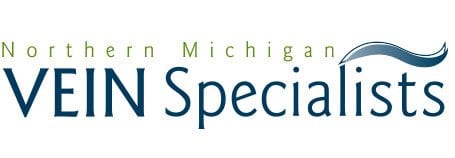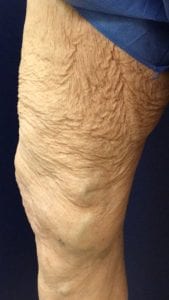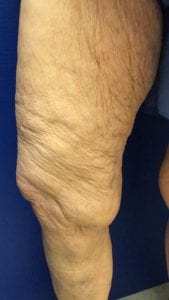Vein Treatments
in Traverse City and Cadillac, Michigan
All the following treatment options are minimally invasive and can be done in a clean, comfortable office setting with minimal if any disruption of normal activities. While patients may have some minor discomfort after some of the treatments, it is rare to need anything more than over the counter medications such as Tylenol or Motrin. Our staff and doctors are equipped to offer treatment for all kinds of vein disorders.
Patient Testimonial
“I went to see Dr. Heeringa last spring to have my veins evaluated. I was very hesitant because 16 years earlier, I had varicose vein stripping that involved out-patient surgery, and 3 weeks off of work at the age of 28. I was told it wouldn’t be my last surgery. This experience was quite different! All I can say is WOW! The procedures were done in the office and I was back to work the next day. After having procedures on both legs, there is a noticeable difference! I used to come home from work and my feet and legs were so swollen and sore, I was done for the day. Now I have more energy. I also noticed that my blood pressure has been better. This summer, I had to buy new shoes because my feet are not swollen like they use to be. I would recommend Northern Michigan Vein Specialists and Dr. Heeringa to anyone!”
Conservative Therapies
A trial of conservative therapy is often required by insurance before we can treat your varicose veins. Many insurances require a period of 6-12 weeks of conservative care before they will cover vein treatments. Conservative measures include graduated compression stockings, exercise, periodic leg elevation and Unna boots.
Non-Thermal, Non Tumescent Ablation
As the only uncomfortable part of RFA and EVLT is the local anesthetic, there have been many advances in the recent years to treat diseased veins in manners that do not require heat energy and therefore will eliminate the need for the tumescent local anesthesia. Dr. Heeringa has been one of the first physicians in Northern Michigan to perform some of these procedures. While these techniques can eliminate the need for tumescent anesthesia, it is important to check your insurance coverage, as many of the newer techniques may not be covered.
This procedure involves inserting a small catheter up the diseased vein. A tiny amount of cyanoacrylate glue is then delivered through the catheter to glue the target vein closed. This is the only procedure that does not require patients to wear compression stockings afterward and initial studies have shown this to be as effective as RFA! While this procedure is not covered by insurance, it allows for the treatment of both legs at the same day and patients can resume normal activity immediately after the procedure. Read More!
Polidocanol microfoam or Varithena involves injecting a microfoam which has the consistency of shaving cream into the target vein. This foam then fills the target vein and acts to seal the vein closed.



